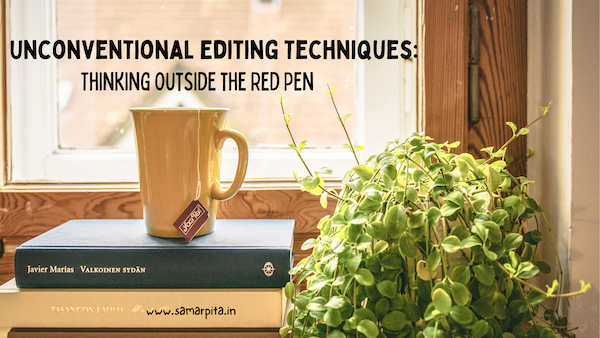Editing is crucial for any writer. However, traditional methods can sometimes feel tedious. That’s where unconventional techniques come in. These methods can provide fresh perspectives on your work. They also make the editing process more enjoyable. Here are some creative editing techniques you might not have tried.
Reverse Outlining
Reverse outlining is a powerful tool. Unlike traditional outlining, you start with your completed draft. First, summarize each paragraph or section in a few words. Then, examine the outline for structure and flow. This helps identify areas that need reorganization or clarification.
Also Read: Navigating the Editing Journey: A Collaborative Symphony
Read Backward
Reading backward sounds strange, but it works. Start with the last sentence and move to the first. This method forces you to focus on individual sentences. It helps catch errors and awkward phrasing. It also prevents your brain from filling in gaps automatically.
Use Voice-to-Text Software
Voice-to-text software can be a game-changer. Read your manuscript aloud and let the software transcribe it. Listening to your words can highlight issues you might miss when reading silently. It also helps improve dialogue and narrative flow.
Also Read: Demystifying Manuscript Editing: A Comprehensive Journey
Change the Font and Format
Sometimes, a simple change can make a big difference. Change the font or format of your document. This tricks your brain into seeing the text as new. It helps spot mistakes and awkward sentences that you might overlook in the usual format.
Take a Break and Come Back
Distance can provide clarity. Take a break from your manuscript for a few days or weeks. When you return, you’ll have fresh eyes. This new perspective can help you see issues more clearly. It also makes the editing process less overwhelming.
Also Read: Ten Crucial Editing Skills Every Writer Needs
Use Color-Coding
Color-coding is not just for organization. Use different colors to highlight different aspects of your writing. For instance, use one color for dialogue, another for descriptions, and another for action. This visual separation helps balance elements and improve pacing.
Read Aloud to Someone Else
Reading aloud to someone else can reveal hidden problems. It forces you to engage with the text differently. The listener’s reactions can also provide valuable feedback. This method helps ensure your writing is clear and engaging.
Also Read: X-Factor Editing Techniques: Going Above and Beyond
Physical Editing with Paper and Pen
Sometimes, going old-school can be beneficial. Print out your manuscript and edit it with a pen. The physical act of writing engages your brain differently. It can help you catch errors and improve sentence structure. Plus, it’s a good break from staring at a screen.
Role-Playing Characters
This technique is especially useful for dialogue. Act out scenes or conversations as if you’re the characters. This can help make dialogue more natural and authentic. It also helps with character development and consistency.
Also Read: In-Depth Editing: Strategies for Comprehensive Reviews
Mind Mapping for Plot Development
Mind mapping is a great tool for visual thinkers. Create a mind map of your plot and characters. This helps identify connections and plot holes. It also provides a visual overview of your story, making it easier to see the big picture.
Utilize Beta Readers Creatively
Beta readers are a valuable resource. Instead of asking for general feedback, give them specific tasks. For example, one reader focuses on plot, another on character development, and another on pacing. This targeted feedback can be more effective and insightful.
Also Read: Editing vs. Proofreading: What’s the Difference?
Conclusion
Unconventional editing techniques can breathe new life into your manuscript. They offer fresh perspectives and make the editing process more engaging. Try incorporating some of these methods into your next editing session. You might find they help improve your writing significantly. Happy editing!
***
If you are looking for an excellent manuscript editor, someone to create content for your business, or an expert to help build your personal or professional brand on social media, then look no further and connect with me at editor@samarpita.in I can be followed on instagram at @samarpita and on twitter at @samarpitadotin.
***********
Read my ebook WRITE. EDIT. PROMOTE. to learn the basics about becoming an author – from writing your own book, to editing your first draft, and to promoting your book yourself! You can also read my ebook How To Write A Story Effectively and learn some valuable lessons about how a story can go from average to extraordinary. This book is part 1 of the series.
In fiction, I have two short stories for children in an ebook called Bedtime Stories.

